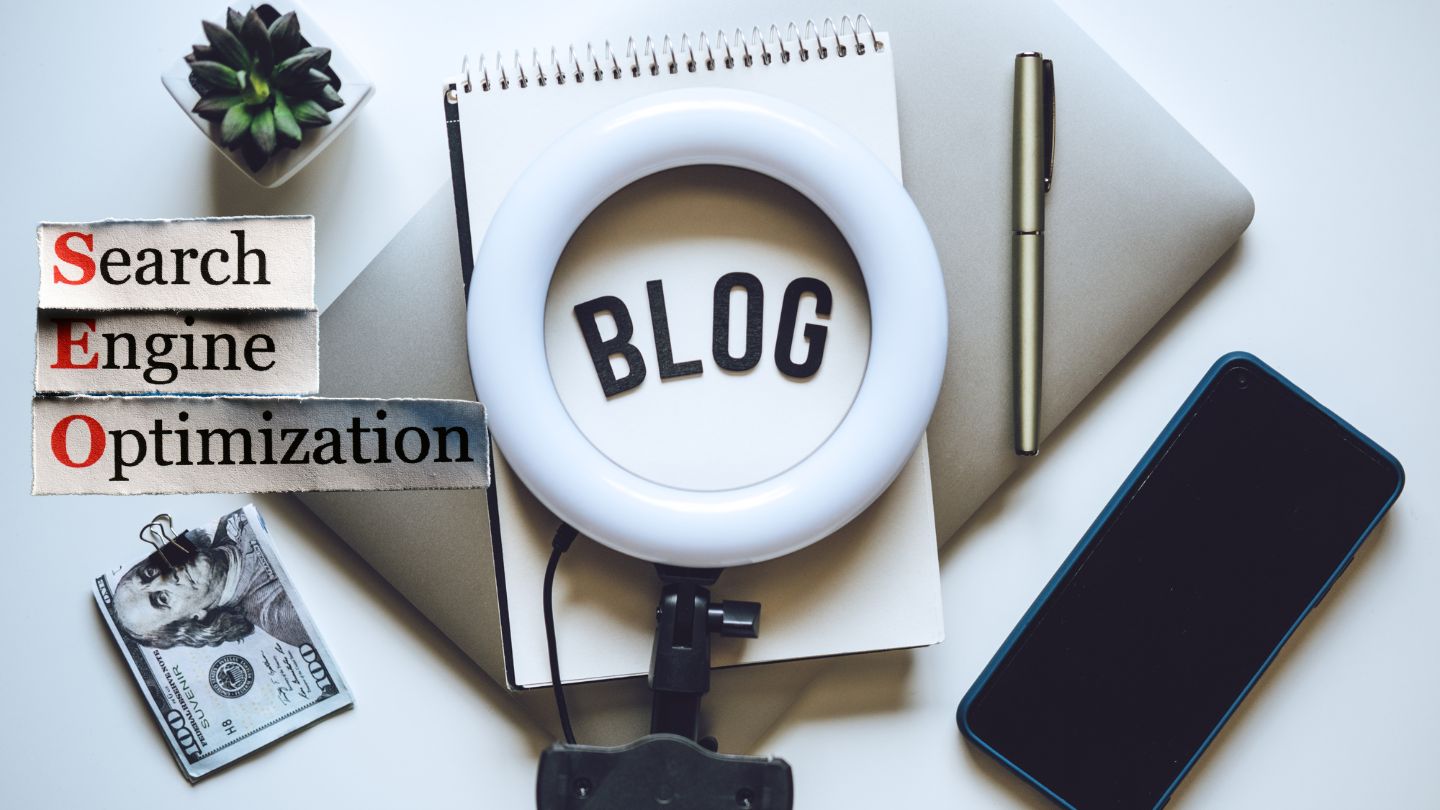Effective Strategies for Crafting Blog Post Headings for SEO
Blog Post Headings SEO when you write a blog post, the heading is the first thing your readers see. A compelling heading can capture attention and persuade visitors to keep reading. However, when it comes to SEO, blog post headings play an even more pivotal role. Crafting them thoughtfully can not only enhance user experience but also improve your visibility on search engines.
Understand Your Audience
Before you begin writing, it’s essential to understand who your audience is and what they seek. Consider their interests, problems they want to solve, and how your content can meet their needs. This understanding helps you create headings tailored to attract your target readers.

Use Relevant Keywords
Including keywords in your headings is critical for SEO. Keywords are the terms and phrases that potential readers type into search engines. Here’s how to effectively use keywords in your headings:
- Main Keyword: Place your primary keyword at the beginning of the heading whenever possible.
- Natural Flow: Make sure that the keyword incorporation feels natural and doesn’t disrupt the flow of your heading.
- Variations: Utilize synonyms or related terms to diversify your keyword usage throughout your content.
Keep It Short and Sweet
Ideal blog post headings should be concise. Research shows that headings between 50-60 characters tend to perform better in search rankings. Aim for clarity while trying to pique curiosity. You want readers to understand what to expect, yet still feel intrigued enough to click on it.
Utilize Numbers and Lists
Blog Post Headings SEO, Including numbers in your headings can significantly increase clicks as they suggest structured information. For instance, “7 Effective Tips for Blog Post Headings” or “5 Mistakes to Avoid in SEO Writing” give readers a clear expectation of what they will learn. Here’s why this tactic works:
- Skimmable Content: Readers love skimming. Numbered lists allow them to quickly grasp the key points.
- Engaging Format: Lists often create a more engaging format, resulting in higher reader retention.
Create a Sense of Urgency
When crafting your heading, using phrases that establish urgency can enhance click-through rates. Phrases like “Don’t Miss Out” or “Act Now” encourage readers to engage immediately. Here are some strategies:
- Limited Time Offers: Mention if something is time-sensitive.
- Exclusive Content: Titles that imply exclusivity draw interest.
Incorporate Emotional Triggers
Blog Post Headings SEO. Headings that provoke emotion often resonate more deeply with readers. Using words that stir up joy, fear, surprise, or curiosity can spur readers to click. For example, a title like “Unlock Your Potential: 10 Secrets to Success” is far more engaging than “10 Tips for Success.” Experiment with different emotional triggers to find what hits home with your audience.
A/B Testing Your Headings
Employing A/B testing can offer insights into what headings perform best. Use different headings for the same post and monitor the engagement metrics. Platforms like WordPress and social media offer analytics tools to analyze which heading garners more clicks and reader retention. Here are tips for A/B testing:
- Consistency: Ensure that both headings target the same audience.
- Time Frame: Test over a specific time period for reliable results.
Consider Search Intent
When crafting headings, align them with the search intent behind keywords. Are people looking for information, or are they seeking to solve a problem? Understanding this helps in tailoring your headings accordingly. Some common search intents include:
| Search Intent | Description |
|---|---|
| Informational | Users seek to learn about a specific topic. |
| Navigational | Users want to find a specific website or page. |
| Transactional | Users intend to make a purchase or complete a transaction. |
By matching your heading to search intent, you’ll boost its relevancy and increase the chances of attracting the right audience.
Mastering the art of crafting blog post headings for SEO can significantly enhance your blog’s performance. It’s not just about appealing to search engines; it’s about engaging real people with real interests. Focus on creating headings that resonate with your audience while fulfilling SEO best practices for optimal results.
The Impact of Headings on Reader Engagement and Retention
Blog Post Headings SEO, Headings play a significant role in capturing reader interest and facilitating better retention of information. When it comes to blog posts, the structure and phrasing of headings can profoundly affect how readers engage with the content. Well-crafted headings can encourage readers to delve deeper into the text, while poorly designed ones may cause them to click away. Here’s how to optimize your headings for maximum impact.
Why Headings Matter
People often skim through content on the internet, searching for valuable information. Headings serve as signposts, pointing readers toward essential points within your articles. Here’s why headings are crucial for reader engagement:
- Increased Scannability: Headings break up large chunks of text, making it easier for readers to scan your content and find relevant information quickly.
- Contextual Clarity: They help provide context for what follows, indicating the main ideas of each section.
- Improved Retention: When headings are clear and engaging, readers are more likely to remember the content associated with those headings.
Crafting Effective Headings
To make a lasting impression on your readers, consider these strategies when creating blog post headings:
1. Use Keywords Wisely
Relevant keywords can not only help with SEO but can also summarize what the reader will find in that section. For instance, instead of simply using “Gardening Tips,” a more descriptive and engaging heading could be “Top 5 Gardening Tips for Beginners.” This conveys that the section will provide actionable, beginner-friendly advice.
2. Be Clear and Concise
Clarity is vital when writing headings. Readers should be able to understand the point of your section at a glance. Aim for brevity while retaining meaning. A heading like “Understanding the Importance of Soil Quality” is more effective than “The Significance of Soil Quality in Gardening.”
3. Utilize Active Voice
Active voice tends to be more engaging than passive voice. Instead of saying “The Benefits of Proper Watering Techniques,” you can say “Master Proper Watering Techniques for Thriving Plants.” This approach adds a sense of action and immediacy.

4. Create Intrigue
Headings can spark curiosity. For example, “Secrets to a Lush Garden” invites readers to find out what those secrets are. However, ensure that the intrigue is relevant to the content that follows to keep your audience’s trust.
Headings and SEO Impact
Headings are not only beneficial for reader engagement but also play a critical role in enhancing your content’s SEO performance. Here’s how:
1. Structure Your Content
Using an organized heading structure helps search engines understand the hierarchy of your content. This means that a well-structured blog can rank higher in search results, drawing more readers to your website.
2. Enhance User Experience
A well-structured post with clear headings will likely lead to a lower bounce rate. When users can quickly locate what they need, they are likely to stay longer and explore other sections of your site.
Measuring Reader Engagement
To evaluate how effective your headings are, you should monitor various engagement metrics:
| Metric | Description |
|---|---|
| Bounce Rate | The percentage of visitors who leave your site after viewing only one page. |
| Average Time on Page | The average amount of time a user spends on your blog post. |
| Scroll Depth | A measurement of how far down the page users scroll. |
For example, if you notice a high bounce rate on posts with vague or uninteresting headings, it might be time to revisit and revise those headings. Keep experimenting to find what resonates best with your audience.
Blog Post Headings SEO, Headings are invaluable tools for enhancing both reader engagement and SEO effectiveness. By crafting engaging, clear, and keyword-rich headings, you can draw in readers and keep them invested in your content. Test different strategies and observe how your audience responds to identify the most impactful way to connect with them.
Utilizing Keywords in Blog Post Headings: Best Practices
When crafting blog posts, the way you construct your headings significantly impacts your search engine optimization (SEO). Properly utilizing keywords in blog post headings can help enhance visibility and attract your target audience. Here are some best practices to guide you in effectively incorporating keywords into your blog post headings.
Understanding the Role of Headings
Headings serve multiple purposes in a blog post. They guide readers through your content, improve readability, and help search engines understand the structure and main ideas of your article. By placing relevant keywords in headings, you not only optimize your content for search engines but also engage your readers more effectively.
Keyword Research
Before you write your blog post, conduct thorough keyword research. This step is crucial for determining what keywords your audience is searching for. Use tools like Google Keyword Planner, Ahrefs, or SEMrush to find relevant keywords with high search volumes. Aim for keywords that connect with your target audience’s interests and content type.
Strategic Placement of Keywords
Keywords into your headings requires strategy. Consider the following tips:
- Main Keyword in the Title: Ensure that your primary keyword appears in the main title of the blog post. This indicates to search engines and readers alike what the article is about.
- Use Secondary Keywords: Adding secondary keywords or variations in subheadings can provide additional context to your content.
- Natural Flow: While it’s essential to use keywords, do so in a way that maintains a natural flow. Avoid keyword stuffing, as it annoys readers and can lead to penalties from search engines.
Headings Length
When creating headings, consider their length. Shorter headings often perform better because they are easier to read and understand. Aim for:
- Main headings: 60 characters or less
- Subheadings: 40 characters or less
Using concise headings helps in improving click-through rates and keeping readers engaged.
Engaging Your Audience
Headings should catch the reader’s attention and spark interest. Here are a few tips for creating engaging headings:
- Ask Questions: Pose a question in your heading to invite readers to explore the answer within your blog post.
- Use Numbers: Lists or tips included in headings can attract readers. For instance, “5 Tips for Effective SEO” can draw interest
- Create Urgency: Phrases like “Don’t Miss Out” or “Last Chance” in your headings can prompt immediate action from readers.
Formatting for Readability
How your headings are formatted plays a significant role in readability and SEO. Use bullet points, numbered lists, and short paragraphs to enhance the visual appeal of your content. Additionally, consider using bold font or italics to emphasize important parts of your headings.
Monitoring Performance
Blog Post Headings SEO, Once your content is published, it’s essential to monitor how your headings are performing. Use tools like Google Analytics or SEMrush to track metrics such as click-through rates (CTR) and organic traffic. Analyze which headings are attracting more readers and adjust your strategy accordingly over time.
Common Mistakes to Avoid
While optimizing headings, be aware of some common pitfalls that can hinder your SEO efforts:
- Overly Generic Headings: Avoid vague titles like “Blog about SEO”. Instead, use specific titles that clearly indicate the content.
- Nebulous Keywords: Stick to keywords that are relevant and specific to your audience needs.
- Ignoring Semantic Search: Recognize that search engines use semantic search, so consider synonyms and related terms to broaden your keyword use.
By following these best practices, you can improve your blog post headings’ SEO. Optimized headings enhance visibility, engage readers, and boost your chances of ranking higher in search results. Ultimately, understanding how to use keywords in your headings will not only help in driving traffic but will also establish your authority in your niche.
How to Analyze Competitor Headings for Better SEO Outcomes
Blog Post Headings SEO, Understanding how to analyze competitor headings can significantly boost your SEO strategy. When you examine what successful competitors are doing with their headings, you can enhance your own blog post headings for better performance in search results. Here’s how to dive deep into this analytical process.
Identify Your Competitors
Before you can analyze competitor headings, you need to know who your competitors are. Use the following steps:
- Search for Keywords: Type your primary keyword into a search engine and see who ranks on the first two pages.
- Select Relevant Sites: Choose competitors that are directly related to your niche or industry.
- Use SEO Tools: Tools like SEMrush or Ahrefs can help identify competitors based on content performance.
Examine Heading Structures
Once you’ve identified your competitors, the next step is to analyze how they structure their headings:
- Types of Headings: Look at the main headings (H1) and subheadings (H2, H3) used in their posts to understand how they organize information.
- Length of Headings: Measure the word count of their headings. Are they short and catchy, or longer and descriptive? This can indicate their audience’s preferences.
- Keyword Usage: Identify if they include primary and secondary keywords in their headings. This is crucial for SEO.
Analyze Engagement Factors
Headings play a crucial role in engaging readers. Observe the following factors when analyzing titles:
- Emotional Triggers: Do their headings evoke curiosity or urgency? Titles that provoke emotions often perform better.
- Clarity and Relevance: Ensure that headings clearly define the content that follows. Misleading titles can lead to bounce rates.
- Use of Numbers and Lists: Blog posts that include numbers tend to attract more clicks. Analyze how competitors incorporate critical statistics or lists within their headings.
Evaluate Performance Metrics
Using SEO tools, gather data on how competitors’ headings perform. Here’s what to focus on:
- Click-Through Rates (CTR): Analyze which headings have higher CTRs in organic search results. A high CTR indicates that the heading is resonating with users.
- Search Rankings: Check the ranking positions for posts with various heading types. This can tell you which strategies are more effective.
- Backlinks: Posts with engaging headings may attract more backlinks. Use tools to see how many backlinks are pointing to competitor articles.
Incorporate Findings into Your Strategy
After gathering insights, it’s time to implement what you’ve learned. Follow these steps:
- Create Unique Headlines: Use competitor findings to inspire your own headings, but ensure they are unique and reflect your branding.
- Optimize for SEO: Incorporate relevant keywords naturally in your headings without compromising clarity.
- Test Variations: Consider A/B testing different headings to see which performs better over time.
Stay Updated on Trends
The SEO landscape is ever-evolving. Regularly revisit competitor headings to stay ahead of the curve:
- Monitor New Trends: Keep an eye on changing patterns in headings and content that attract high engagement.
- Reassess Keyword Trends: Use SEO tools to check if keywords are still relevant or if new keywords need to be included in your headings.
By analyzing competitor headings, you gain invaluable insights that can enhance your own SEO outcomes. Focus on clarity, engagement, and optimization while ensuring originality in your content. This proactive approach can position your blog posts for improved visibility and reader engagement in search engines.
The Role of Formatting and Structure in Optimizing Blog Headings
Blog Post Headings SEO, Creating effective blog post headings is crucial for capturing reader attention and improving search engine optimization (SEO). The way you format and structure these headings can significantly influence your post’s visibility and engagement. When you optimize your blog headings, you not only make them appealing but also enhance the readability of your content. This ultimately benefits your audience and can help your blog perform better in search rankings.
Blog Post Headings SEO to begin with, an enticing blog heading should reflect the content covered within the post. A well-crafted heading gives readers a clear idea of what to expect. By incorporating relevant keywords naturally into your headings, you can amplify your chances of ranking higher in search engine results. Make sure your primary keyword appears right at the beginning of your title if possible. This is because search engines often assign more weight to the first few words.
Using numbers in blog headings is another effective strategy. Readers tend to be drawn to headlines that include digits. For example, instead of writing “Ways to Improve SEO,” you might say “5 Simple Ways to Boost Your Blog Post SEO.” This small change can lead to increased click-through rates, as readers often find numbered lists organized and easy to understand.
You can enhance your headings by employing various formatting techniques:
- Utilize Title Case: Capitalizing the important words in your heading can make it visually stand out.
- Keep it Concise: Aim for around 60 characters. This length is optimal for search visibility and prevents your title from getting cut off in search results.
- Use Rich Descriptive Language: Incorporate action words or strong adjectives to evoke curiosity in your audience. Phrases like “Ultimate Guide” or “Essential Tips” can engage readers effectively.
Another key aspect of optimizing your blog headings is structuring them correctly. Search engines like Google pay attention to the hierarchy of headings within your content. Therefore, use headings and subheadings (H3 and H4 tags) thoughtfully. For example, if you are addressing multiple points within a post, break the content into manageable sections and label them appropriately. This not only helps with SEO but also improves the scannability of your content.
| Heading Type | Purpose | Example |
|---|---|---|
| H3 | Main sections of your article | How Blog Post Headings Improve SEO |
| H4 | Subsections under H3 | Benefits of Strong Headings |
| H5 | Additional details or examples | Statistics on Click-Through Rates |
Another vital consideration is user intent. Understanding what your readers are searching for can help you tailor your headings more effectively. Use tools like Google Trends or keyword research tools to identify popular search queries related to your topic. This will allow you to shape headings that align with what your audience seeks, thereby boosting engagement.
Furthermore, test different variations of your headings to gauge performance. Utilizing A/B tests for your blog headlines can reveal which formats resonate more with your audience. You can experiment with different styles, lengths, and keywords to see what generates the most clicks. Monitor analytics to see which headings lead to higher reader retention and interaction.

Questions into your blog headings can also increase reader interest. Questions naturally evoke curiosity, making readers want to find the answers. For example, instead of “Blog Post Optimization Tips,” consider “What Are the Best Tips for Optimizing Blog Posts for SEO?” This approach directly invites the reader in and makes it feel more personal.
Blog Post Headings SEO, Don’t overlook the power of emotional words in your headings. Words that evoke feelings, such as “exciting,” “unbelievable,” or “essential,” can draw readers in and essentially compel them to click through to your blog. Strive to strike the right balance between SEO and the emotional appeal of your headings.
Understanding the role of formatting and structure in optimizing blog headings is essential. By focusing on the visual appeal and keyword strategy, utilizing a clear hierarchy of headings, considering user intent, and integrating strong emotional language, you can create effective and engaging blog post headings that enhance both your audience’s experience and your SEO performance.
Key Takeaway:
Creating effective blog post headings is essential for improving SEO and engaging readers. The right heading can significantly impact your article’s visibility in search results as well as your audience’s willingness to click through and read your content. Here are the key takeaways from the topics covered.
Effective Strategies for Crafting Blog Post Headings for SEO: Firstly, your headings should be compelling and informative. A strong heading not only grabs attention but also clearly communicates the value of the content to the reader. Using action words, creating a sense of urgency, and incorporating numbers or lists can all help make your headings pop. Additionally, aim for a balance between creativity and clarity, ensuring your heading reflects the article’s core message.
The Impact of Headings on Reader Engagement and Retention: Well-crafted headings can enhance reader engagement. They set expectations and frame the narrative. When headings are interesting and relatable, they encourage readers to stay longer on your page, reducing bounce rates. Engaging headings can also increase social shares, as catchy titles often entice people to click and spread the word.
Utilizing Keywords in Blog Post Headings: Best Practices: Strategically placing relevant keywords in your headings can improve your SEO rankings. Start by conducting keyword research to find terms your target audience is searching for. Once identified, incorporate these keywords naturally into your headings without compromising readability. Tools such as Google Trends or keyword planners can assist in identifying high-traffic keywords relevant to your topic.
How to Analyze Competitor Headings for Better SEO Outcomes: Understanding what works for your competitors can give you insight into effective heading strategies. Analyze their headings for tone, structure, and keyword usage. Pay attention to which types of headings get the most engagement. This competitive analysis can help you adapt successful elements while adding your unique touch to stand out.
The Role of Formatting and Structure in Optimizing Blog Headings: The visual appeal of your headings also matters. Use formatting tools like bold text, bullet points, and subheadings to enhance readability and make it easier for readers to scan your content. A clear structure, with a logical flow from headings to subheadings, can greatly improve user experience.
Effective blog post headings play a crucial role in both SEO and reader engagement. By employing the strategies outlined above, you can craft headings that attract attention, retain readers, and optimize your posts for search engines.
Can I Do SEO Myself? Key Strategies to Start in 2025 Get Started Today
Conclusion
Crafting compelling blog post headings is an essential step in increasing your content’s visibility and engagement. By implementing effective strategies for writing SEO-friendly headings, you can significantly enhance your chances of attracting both search engines and readers alike. Remember that headings are not just a collection of words; they serve as your first impression and can greatly influence reader engagement and retention.
Blog Post Headings SEO, utilizing relevant keywords in your headings allows search engines to understand the topic of your content better, which is crucial for ranking well in search results. Best practices, such as placing keywords strategically and keeping headings concise, can lead to improved click-through rates.
Analyzing competitor headings provides invaluable insights into what resonates with audiences in your niche. By studying successful examples and tweaking your own approach, you can create headings that draw in more visitors and keep them engaged longer.
Don’t underestimate the importance of formatting and structure. Well-organized headings create a roadmap for readers, making it easier for them to navigate your content. Utilizing subheadings and bulleted lists can also break up long text, enhancing readability.
By applying these strategies holistically, you position your blog posts for greater success. Focusing on both SEO and reader experience ensures that your content not only ranks well but also leaves a lasting impact on your audience. This dual approach is key to fostering loyalty and encouraging repeat visits to your blog.
FAQ
How to write SEO blog posts
Crafting SEO-friendly blog posts involves a strategic approach to content creation. By conducting thorough keyword research, optimizing titles and meta descriptions, and incorporating relevant keywords naturally into your content, you can improve your website’s visibility in search engine results. 1 Additionally, using a clear and concise writing style, along with formatting techniques like headings and bullet points, enhances readability and user experience, contributing to better SEO and increased engagement.
What is the best size blog post for SEO
The optimal blog post length for SEO varies depending on factors like topic complexity and target audience. While there’s no one-size-fits-all answer, longer, in-depth posts (around 2,000 words) tend to rank better in search engine results. However, quality content is more important than length. Focus on providing valuable information, using relevant keywords, and creating a positive user experience.
What are SEO titles
SEO titles, also known as meta titles, are the clickable headlines that appear in search engine results. They play a crucial role in attracting users to your website. A well-crafted SEO title should be concise, informative, and include relevant keywords to improve your search engine rankings.
What is SEO in blog post
SEO, or Search Engine Optimization, is the practice of improving a website’s visibility in search engine results. By optimizing your blog posts with relevant keywords, high-quality content, and strong backlink profiles, you can attract more organic traffic and increase your website’s authority. This can lead to higher rankings, increased brand awareness, and ultimately, more potential customers.
How to SEO optimise a blog
To SEO optimize a blog, start by conducting thorough keyword research to identify relevant terms your target audience is searching for. Incorporate these keywords naturally into your 1 blog posts’ titles, headings, and content. 2 Additionally, optimize your images with descriptive file names and alt text. Finally, promote your blog through social media and other online channels to increase visibility and attract organic traffic.

